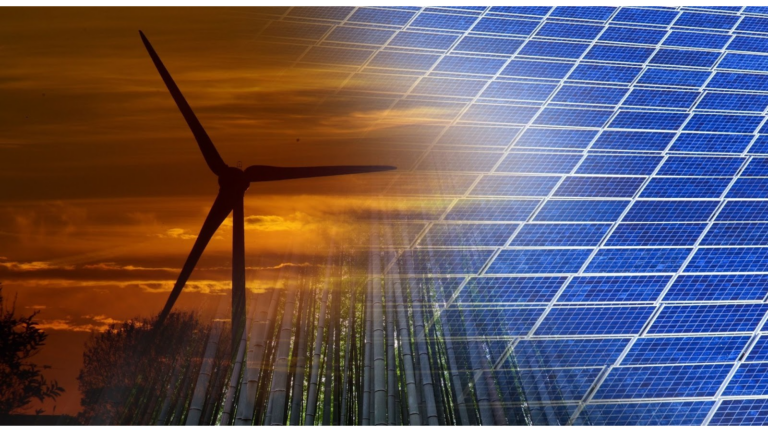Making moves to accelerate self-driving car development, NVIDIA was today named an Autonomous Grand Challenge winner at the Computer Vision and Pattern Recognition (CVPR) conference, running this week in Seattle. Building on last year’s win in 3D Occupancy Prediction, NVIDIA Research topped the leaderboard this year in the End-to-End Driving at Scale category with its
Read Article
NVIDIA researchers are at the forefront of the rapidly advancing field of visual generative AI, developing new techniques to create and interpret images, videos and 3D environments. More than 50 of these projects will be showcased at the Computer Vision and Pattern Recognition (CVPR) conference, taking place June 17-21 in Seattle. Two of the papers
Read Article
 Developing effective locomotion policies for quadrupeds poses significant challenges in robotics due to the complex dynamics involved. Training quadrupeds to…
Developing effective locomotion policies for quadrupeds poses significant challenges in robotics due to the complex dynamics involved. Training quadrupeds to…
Developing effective locomotion policies for quadrupeds poses significant challenges in robotics due to the complex dynamics involved. Training quadrupeds to walk up and down stairs in the real world can damage the equipment and environment. Therefore, simulators play a key role in both safety and time constraints in the learning process. Leveraging deep reinforcement learning (RL) for…
 The era of AI robots powered by physical AI has arrived. Physical AI models understand their environments and autonomously complete complex tasks in the…
The era of AI robots powered by physical AI has arrived. Physical AI models understand their environments and autonomously complete complex tasks in the…
The era of AI robots powered by physical AI has arrived. Physical AI models understand their environments and autonomously complete complex tasks in the physical world. Many of the complex tasks—like dexterous manipulation and humanoid locomotion across rough terrain—are too difficult to program and rely on generative physical AI models trained using reinforcement learning (RL) in simulation.
NVIDIA founder and CEO Jensen Huang on Friday encouraged Caltech graduates to pursue their craft with dedication and resilience — and to view setbacks as new opportunities. “I hope you believe in something. Something unconventional, something unexplored. But let it be informed, and let it be reasoned, and dedicate yourself to making that happen,” he
Read Article
Explainer: What Is Power Efficiency?
 Power efficiency refers to a compute resource’s ability to convert electrical power into useful work with minimal waste or loss. It’s typically measured in…
Power efficiency refers to a compute resource’s ability to convert electrical power into useful work with minimal waste or loss. It’s typically measured in…
Power efficiency refers to a compute resource’s ability to convert electrical power into useful work with minimal waste or loss. It’s typically measured in tasks per watt (or watts per task) and is increasingly important for coping with power-limited data centers and achieving sustainable computing.
 Today’s immersive extended reality (XR) devices require heavy optics and displays to be secured with head straps, a necessity that adds bulk and presents a…
Today’s immersive extended reality (XR) devices require heavy optics and displays to be secured with head straps, a necessity that adds bulk and presents a…
Today’s immersive extended reality (XR) devices require heavy optics and displays to be secured with head straps, a necessity that adds bulk and presents a social barrier. In the envisioned future, head straps will not be required. Over the past few years, NVIDIA Research has been researching how to develop smaller and lighter XR glasses in collaboration with the Computational Imaging Group at…
When she was five years old, Veronica Miller (née Teklai) and her family left their homeland of Eritrea, in the Horn of Africa, to escape an ongoing war with Ethiopia and create a new life in the U.S. She grew up in East Orange, New Jersey, watching others judge her parents and turn them away
Read Article
 With AI introducing an unprecedented pace of technological innovation, staying ahead means keeping your skills up to date. The NVIDIA Developer Program gives…
With AI introducing an unprecedented pace of technological innovation, staying ahead means keeping your skills up to date. The NVIDIA Developer Program gives…
With AI introducing an unprecedented pace of technological innovation, staying ahead means keeping your skills up to date. The NVIDIA Developer Program gives you the tools, training, and resources you need to succeed with the latest advancements across industries. We’re excited to announce the following five new technical courses from NVIDIA, free to new members. Join now to get hands-on…
NVIDIA today announced Nemotron-4 340B, a family of open models that developers can use to generate synthetic data for training large language models (LLMs) for commercial applications across healthcare, finance, manufacturing, retail and every other industry. High-quality training data plays a critical role in the performance, accuracy and quality of responses from a custom LLM
Read Article
